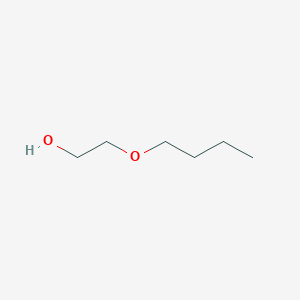-
Categories
-
Pharmaceutical Intermediates
-
Active Pharmaceutical Ingredients
-
Food Additives
- Industrial Coatings
- Agrochemicals
- Dyes and Pigments
- Surfactant
- Flavors and Fragrances
- Chemical Reagents
- Catalyst and Auxiliary
- Natural Products
- Inorganic Chemistry
-
Organic Chemistry
-
Biochemical Engineering
- Analytical Chemistry
- Cosmetic Ingredient
-
Pharmaceutical Intermediates
Promotion
ECHEMI Mall
Wholesale
Weekly Price
Exhibition
News
-
Trade Service
[ Focus on Chemical Machinery and Equipment Network ] When it comes to graphene, I believe everyone is familiar with it.
We can often see it in various articles.
Graphene has many excellent properties, such as electricity, heat, and mechanical properties.
Since its birth, it has been infiltrated in various fields.
Graphene composite materials are now a field where scientific research is very fierce.
Chemical machinery and equipment network hotspots pay attention to chemical machinery and equipmentWe can often see it in various articles.
Graphene has many excellent properties, such as electricity, heat, and mechanical properties.
Since its birth, it has been infiltrated in various fields.
Graphene composite materials are now a field where scientific research is very fierce.
At present, there are two main ways to synthesize graphene.
At present, there are two main ways to synthesize graphene.●Top-down: Exfoliating graphite through a large amount of solvents and high-energy mixing, shearing, ultrasonic and electrochemical treatment.
In this process, in order to promote exfoliation, the graphene is chemically oxidized to become graphene oxide, which is then reduced to obtain exfoliated graphene.
In this process, in order to promote exfoliation, the graphene is chemically oxidized to become graphene oxide, which is then reduced to obtain exfoliated graphene.
●Bottom-up: For example, the use of chemical vapor deposition or *organic synthesis methods.
At the beginning of the year, the research group of Professor James M.
Tour from Rice University in the United States proposed that any carbon source-whether it is carbon black, petroleum pitch, coal, tires or plastic waste, can be used through cheap Joule thermal flash technology.
It becomes gram-level graphene in less than 100 milliseconds, realizing "turning waste into treasure".
Tour from Rice University in the United States proposed that any carbon source-whether it is carbon black, petroleum pitch, coal, tires or plastic waste, can be used through cheap Joule thermal flash technology.
It becomes gram-level graphene in less than 100 milliseconds, realizing "turning waste into treasure".
On October 29th, Professor James M.
Tour's research group made another effort and proposed a method of recycling plastic waste.
Different from the previous use of direct current to increase the temperature of the carbon source, the laboratory adopted a method of exposing plastic waste to high-intensity alternating current for about 8 seconds, and then oscillating the waste into a turbine layer through rapid Joule heating technology.
In addition to the flash graphene (FG), carbon oligomers and hydrogen are also produced.
Tour's research group made another effort and proposed a method of recycling plastic waste.
Different from the previous use of direct current to increase the temperature of the carbon source, the laboratory adopted a method of exposing plastic waste to high-intensity alternating current for about 8 seconds, and then oscillating the waste into a turbine layer through rapid Joule heating technology.
In addition to the flash graphene (FG), carbon oligomers and hydrogen are also produced.
Experiments show that a total of 23 kJ of energy is required to convert 1.
0 g of mixed plastic waste into 0.
18 g of high-quality graphene.
That is to say, the electricity cost of processing each ton of plastic waste is about 125 US dollars (about 848 yuan), and 180 kg of high-quality graphene can be obtained.
Compared with the traditional physical and chemical recycling technology, the plastic recycling cost of this technology has Obvious economic advantage.
0 g of mixed plastic waste into 0.
18 g of high-quality graphene.
That is to say, the electricity cost of processing each ton of plastic waste is about 125 US dollars (about 848 yuan), and 180 kg of high-quality graphene can be obtained.
Compared with the traditional physical and chemical recycling technology, the plastic recycling cost of this technology has Obvious economic advantage.
In addition, the waxy substance formed during the preparation of alternating current graphene was collected, and Fourier transform infrared analysis found that the wax produced was an oligomer with infrared fingerprint properties, similar to a parent plastic with a low degree of oxidation.
These oligomers can be mixed with petroleum hydrocarbon streams to be processed into pure plastics, or can be used to produce detergent composite additives.
These oligomers can be mixed with petroleum hydrocarbon streams to be processed into pure plastics, or can be used to produce detergent composite additives.
Judging from the experimental results, this technology achieves two goals and simultaneously solves the two major problems of "difficult recycling of waste plastics" and "high cost of graphene preparation".
Related work was published on the American Chemical Society magazine "ACS Nano" with the title "Flash Graphene from Plastic Waste".
Related work was published on the American Chemical Society magazine "ACS Nano" with the title "Flash Graphene from Plastic Waste".
Although it is still unknown whether the technology can really land, this undoubtedly opens up new ideas for the development of mixed waste plastic recycling technology.
This article is organized and published by Plastic Machinery Network.
Part of the source is: American Chemical Society Publications (ACS Publications https://doi.
org/10.
1021/acsnano.
0c06328).
If you have any infringement or objection, please contact us.
plastic robot Part of the source is: American Chemical Society Publications (ACS Publications https://doi.
org/10.
1021/acsnano.
0c06328).
If you have any infringement or objection, please contact us.
Original title: Amazing, extract graphene from waste plastic?







